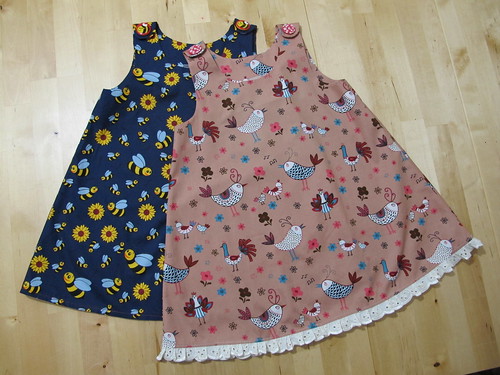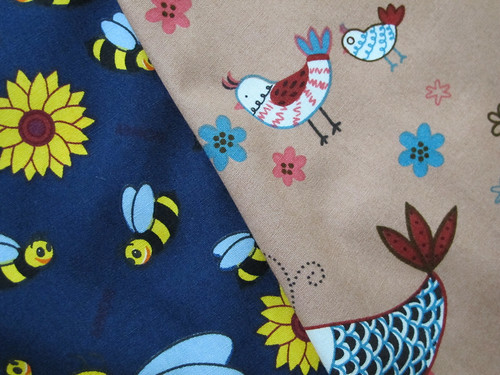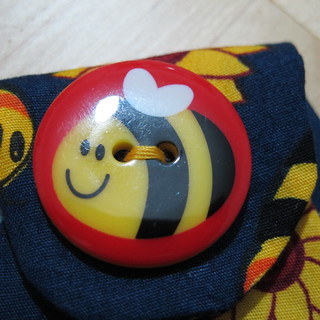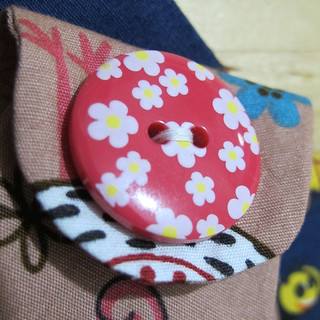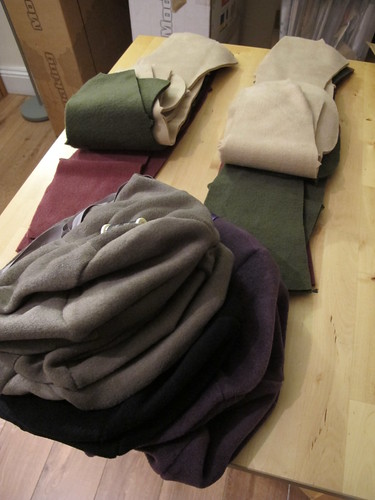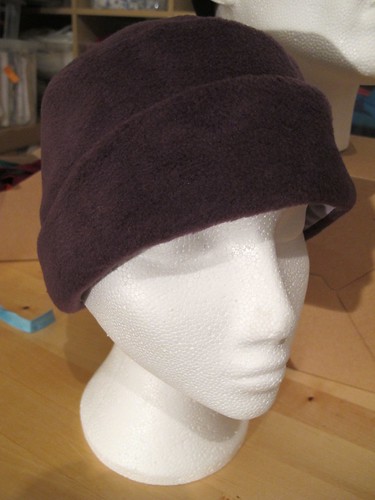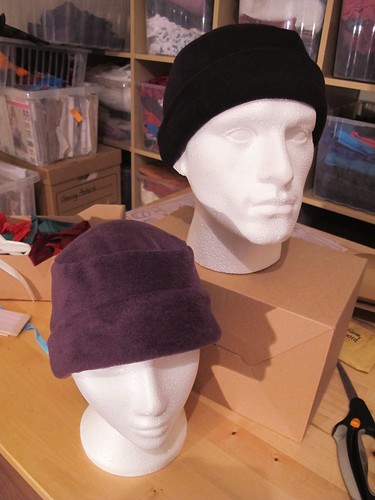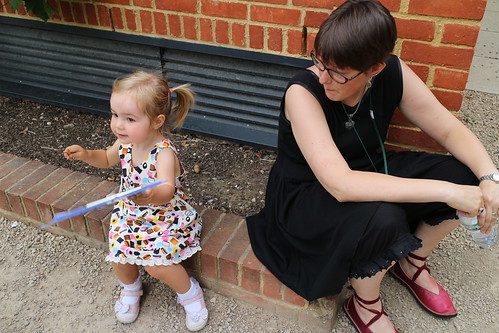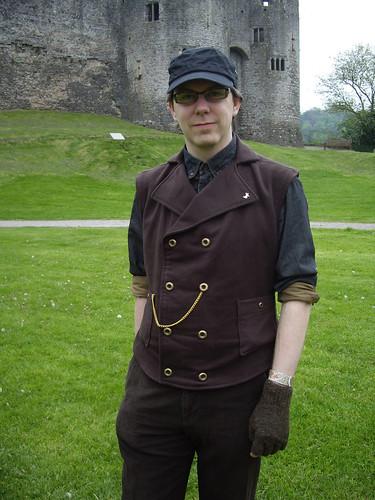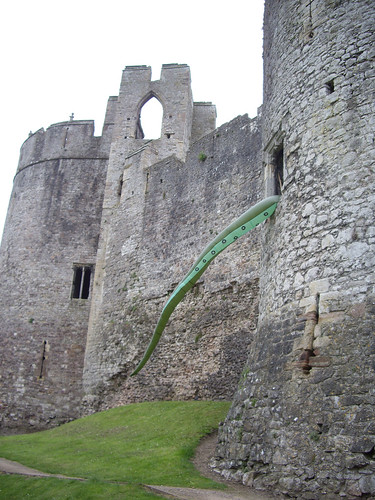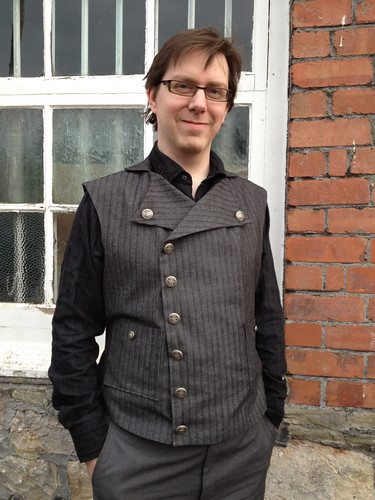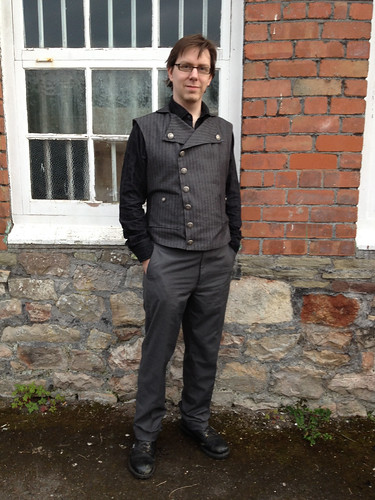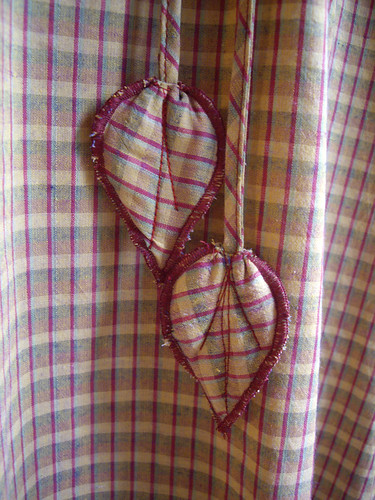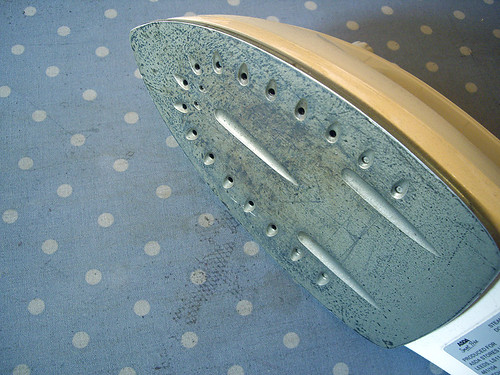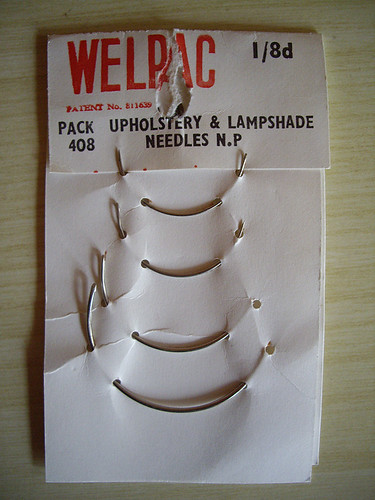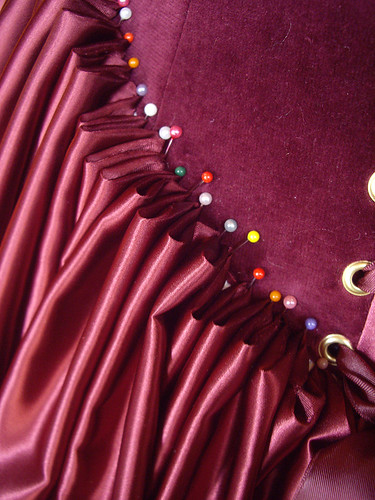Today I have been mostly making Christmas dresses. Yes, I only have the one niece… but I got a bit carried away in the fabric shop! The pattern is Butterick 3772, again. This time it’s in the largest size I have, so I want to get a few more made before they’re outgrown.
I didn’t deliberately buy birds and bees… in fact I didn’t even notice the combination until Paul pointed it out to me! But given that birds and bees are two of my favourite things, it’s probably no surprise that I was smitten with these fabrics.
I was waiting in line to pay for the fabric when I spotted this button across the store. How perfect is that? I kind of want to knit myself a cardigan now, and put great big BEE BUTTONS all down the front.
Not wanting the birdy dress to feel left out, and in the absence of a matching bird button, I thought these little pink flowers would do very nicely. In case the super-observant amongst you are wondering why you can’t see any buttonholes, it’s because the buttons have great big snap fasteners sewn underneath.
I haven’t added any pockets to these dresses, as I want to use the leftovers to do the same thing as last year and make a couple of matching outfits for her rag doll. I’ll make a start on those tomorrow, and if there are still any scraps big enough then these two dresses might end up with pockets after all.
(Note to self: Don’t wrap them up just yet!)

